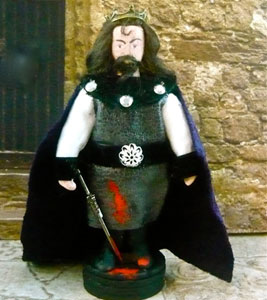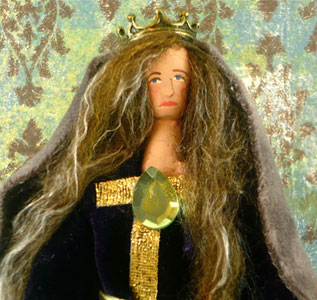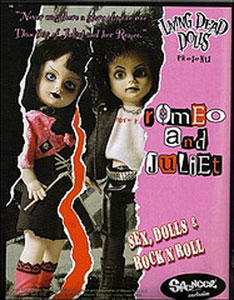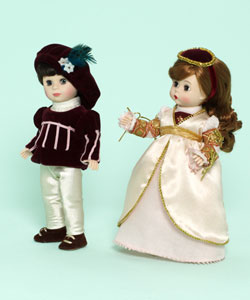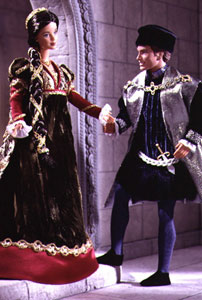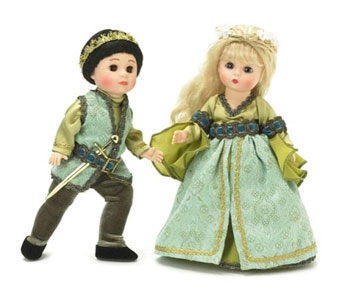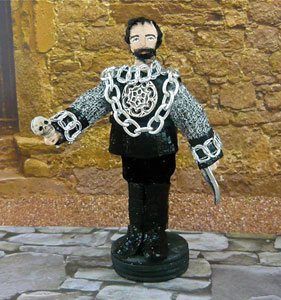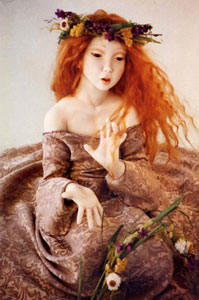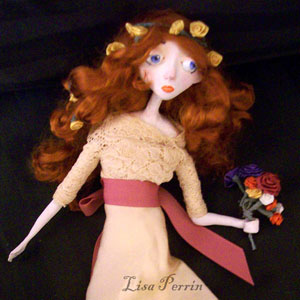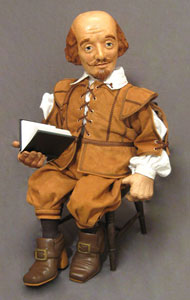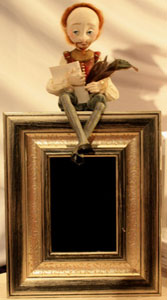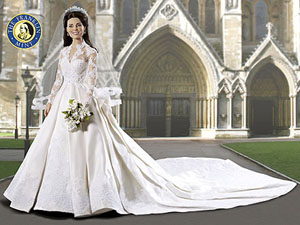One of the best things about living near New York City is the fact that theater is there for the watching. I can’t say “for the enjoying,” because (quite truthfully) some of the productions that end up on the Great White Way are anything but great. They’re often mediocre, or sometimes worse than that. Off-Broadway and off-off-Broadway often have much more risky fare, and many times will offer up the most imaginative and satisfying evenings.
Recently I took a chance and went to see a newly mounted version of “Macbeth.” The Shakespeare tragedy is several centuries old, but this new interpretation seemed potentially dicey because the whole play was acted out by one single performer. Yes, that is actually what did happen: Scottish actor Alan Cumming assumed every role in the show, and embodied each character through changing his voice, shifting his posture, or in one bathtub scene altering how he had his bath towel strategically wrapped around his waist.
I like Alan Cumming a whole lot. He and Liza Minnelli have –hands down—the best duet ever of “Baby, It’s Cold Outside.” I was lucky enough to see him in the stage revival of “Cabaret,” and he’s able to play all kinds of aberrant personalities. Obviously, “Macbeth” gave him a personal field day as he portrayed a man who lets his vanity trump his better nature, a manipulative woman who is cold of heart and really cold-blooded, plus various crones, witches, noblemen, kings, and children.
The setting of this scaled-down “Macbeth” is a mental institution, so we, the audience, are left to wonder if he is reliving these events in his head, has memorized this text and has been driven mad by it, or has committed his own unforgivable crimes and is seizing the Shakespearean tragedy to compensate and to navigate his lost ways. Pretty heady stuff!
By himself for almost two hours, Cumming does have a bit of support from an inanimate secondary actor: an eerie, very sturdy baby doll clad in a dirty and stained gown. The baby doll, which reminded me of the equally sinister character in “Toy Story 3,” plays the role of Malcolm, the assumed heir to the throne. Cumming talks for the doll, moves the doll’s arms and head, and carries it about so it looks regal and threatening. Sometimes filled with rage, he’ll throw the baby doll and—wow!—the doll never shows signs of becoming dismembered or decapitated. That’s one sturdy toy!
When the Tony nominations were announced last month, poor Alan didn’t garner a nod. I felt bad for him, and bad for the baby doll, too. I’ve seen a lot of shows that have been populated by casts of seemingly uncountable numbers, and they’ve not made such a lasting and lurid impression.
There’s something frightening about a grown man, with blood on his hands and on his torso, whose only friend is a mute, plastic plaything. And there’s something even more chilling and memorable when the lone man on the stage is espousing some of the greatest speeches ever written. His “sound and fury” signified something, and his accomplice on the stage held sway over the crowd by not speaking a syllable.
As a doll enthusiast, I already know how much power a doll can have in a person’s life. Eight times a week now, theatergoers are getting to witness this firsthand.
Bravo, Alan Cumming. Bravo, your silent, nonspeaking, nonblinking partner. You might not have earned a Tony, but you’re certainly deserving of a DOLLS Award of Excellence: best one-of-a-kind performance by an actor in a vignette.
If you’re not able to catch him in this limited performance—it’s a limited-edition show—you can still grab a Bard-and-doll experience with a host of Shakespeare-inspired dolls. Over the years, many individual artists, companies, manufacturers, and unexpected sources have released dolls that are based upon the playwright’s most famous creations.
Naturally, the star-crossed lovers of “Romeo and Juliet” have been fashioned as beautifully garbed dolls. The ill-fated Ophelia and her swain Hamlet have also been transformed into doll forms.
The array of creations that owe a debt to the Elizabethan poet and dramatist is incalculable. There are fairy queens and fairies fashioned after “A Midsummer Night’s Dream,” as well as spirits and magicians who hail from “The Tempest.”
For this blog, I’ve showcased some of the designs that caught my fancy. There are confused princes, maudlin teens, suicidal maidens, and weak-willed husbands with overly persuasive wives. Why, Mr. Shakespeare, himself, even takes a bow.
I love that the world of doll artistry permits collectors to pursue their literary favorites while also appreciating the talents and artistry of today’s creative men and women. It’s the best of both worlds: timely designs of timeless characters. These Shakespeare dolls are indeed such stuff as dreams are made on.


